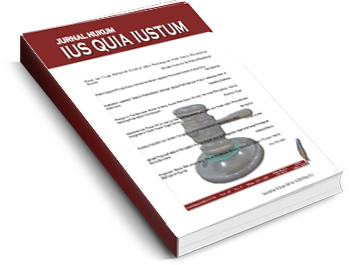Main Article Content
Abstract
This research aims at disclosing empirically legislation practices of regional regulations (Perda) which are analyzed based on the basic principles of democracy. The problems in this research are formulated as follows: (1) Why does the legislation of Regional Regulations in East Java tend to be conducted in elitist way? (2) What factors do obstruct the institutionalization of the basic principles of democracy in the legislation of Regional Regulations in East Java? And, (3) How is the future conceptualization of legislation of Regional Regulations in democracy perspective? To answer the questions, this research uses socio-legal research approach. The result of the research shows that: first, (a) there is a reluctance of the regional elites to disseminate and give room to the community to continually participate in the legislation of Regional Regulations, (b) the process is time-consuming and circuitous, (c) the discussion in Raperda (Regional Regulations meeting) is not focused, (d) lack of budget for the legislation of Regional Regulations activities, (e) not all people understand the matters regulated in Raperda, and (f) regional elites consider that Raperda has already been discussed thoroughly between DPRD (Regional House of Representative) and Regional Government. Second, there are 5 (five) factors that impede the institutionalization of basic principles of democracy in the research area, namely: (a) legal substantial factor,(b) legal structural factor, (c) legal cultural factor, (d) time factor, and (e) budget factor. Third, elite expectation must meet and be harmonious with public expectation.
Keywords
Article Details
Authors who publish with this journal agree to the following terms:
a. Authors retain copyright and grant the journal right of first publication with the work simultaneously licensed under a Creative Commons Attribution License that allows others to share the work with an acknowledgement of the work's authorship and initial publication in this journal.
b. Authors are able to enter into separate, additional contractual arrangements for the non-exclusive distribution of the journal's published version of the work (e.g., post it to an institutional repository or publish it in a book), with an acknowledgement of its initial publication in this journal.




